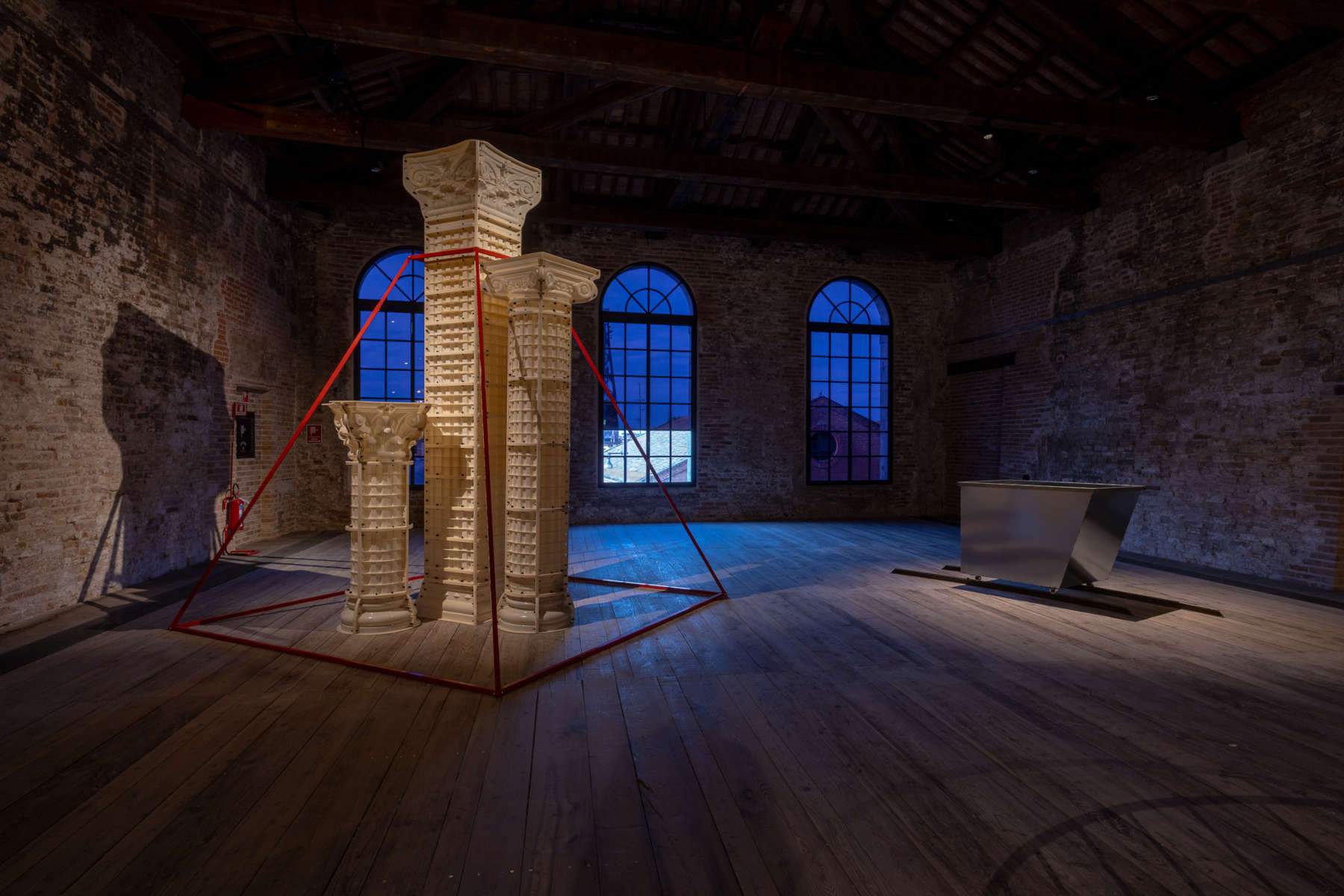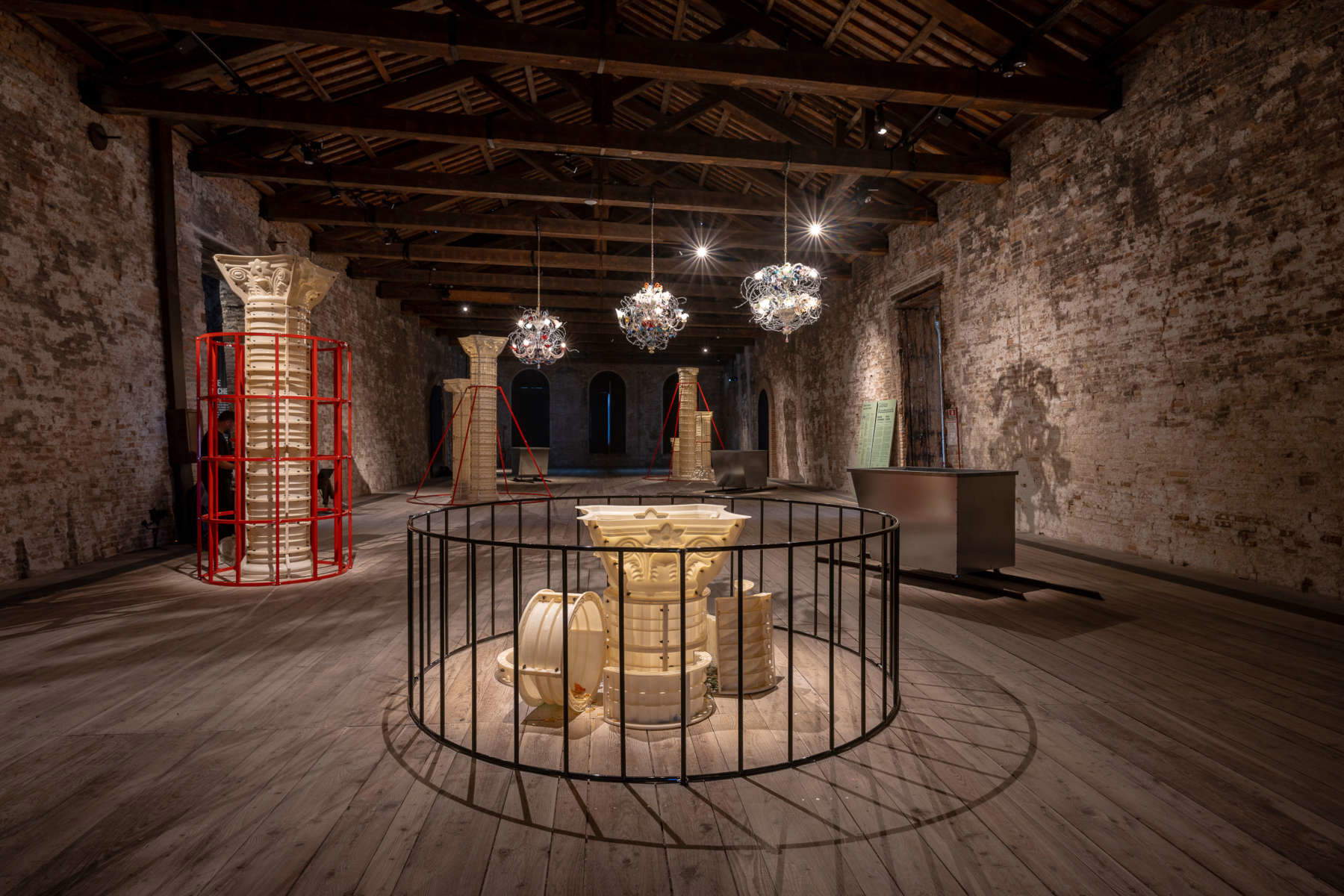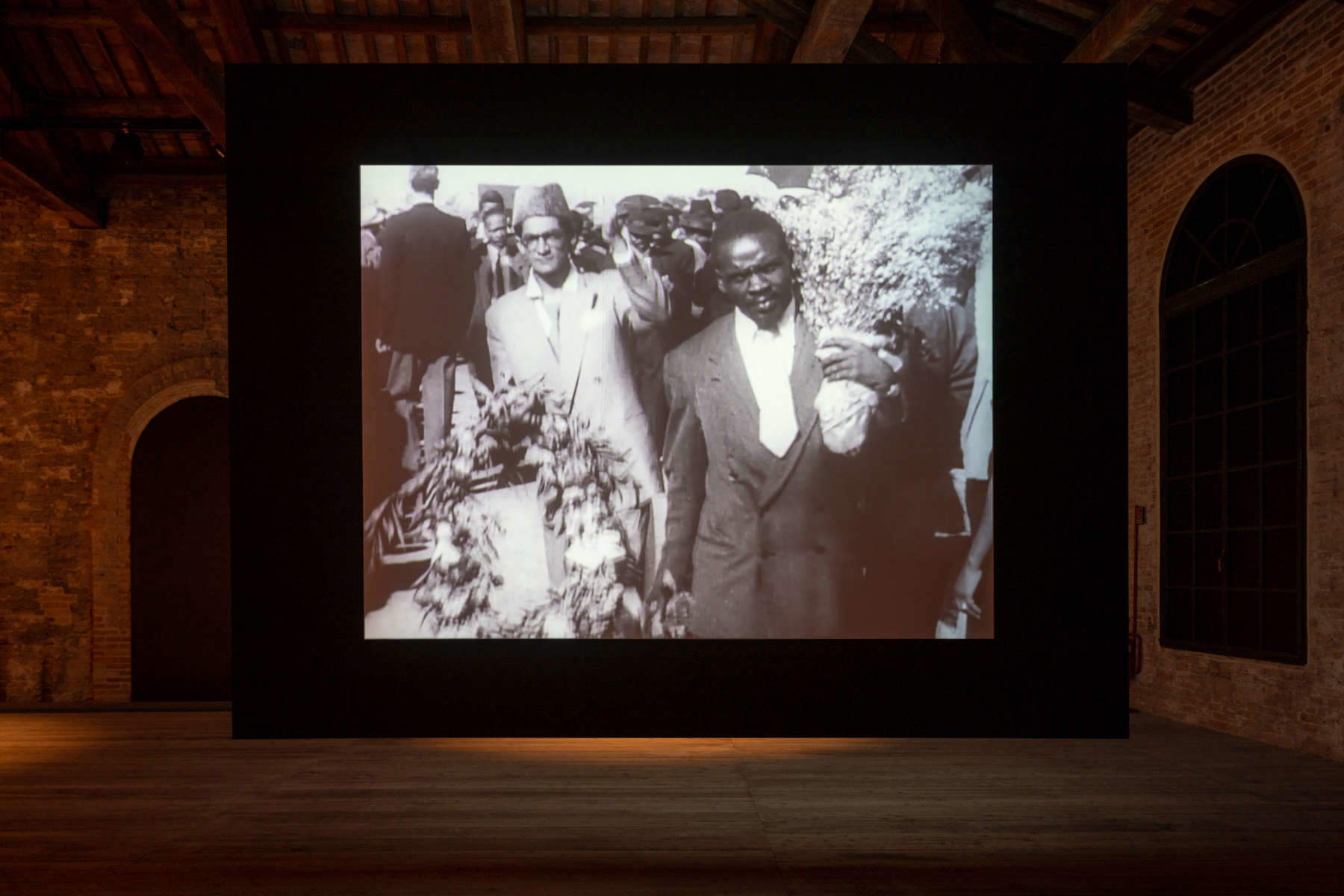Biennale 2024, at Turkey Pavilion a project on the current world affected by wars and tragedies
For the 2004 edition of the Venice Biennale, the Pavilion of Turkey presents Hollow and Broken: A State of the World, a site-specific installation by Gülsün Karamustafa, one of Turkey’s most influential artists. Located in the historic Arsenale’s Sale d’Armi, the exhibition runs from April 20 to Nov. 24. Karamustafa’s installation invites viewers to consider the tragic and tumultuous realities of a world affected by wars, earthquakes, migration and nuclear danger. Composed of an interconnection of sculptural works, the premiere of a new film and a sound installation, these works reflect his perception of the world as broken and empty.
Space plays a central role in the exhibition, with Karamustafa drawing inspiration from the rectangle shape of the Halls of Arms, reminiscent in size of the historic Constantinople Istanbul Hippodrome and the building’s earlier history, reinforcing its connection to its surroundings. Upon entering the Pavilion, visitors encounter three extraordinary chandeliers suspended from above, made from Venetian glass, each representing a monotheistic faith: Christianity, Judaism and Islam. These luminous symbolic objects are wrapped in a barbed wire net, conveying historical tensions and quarrels between each religion and serving as a lens through which it explores the state of our world today. This concept echoes Karamustafa’s 1998 artwork, "Trellis of My Mind," a 20-meter frieze composed of 300 colorful religious illustrations from Islamic, Christian and Jewish manuscripts. Despite their shared narratives, Karamustafa acknowledges that these religions have endured perpetual conflicts throughout history and continue to be shaped by his personal memories of past wars.
Hollow, plastic molds resembling concrete columns are scattered throughout the space, choosing materials in stark contrast to traditional associations of glory, artillery and power. The column molds, supported only by bracing devices, embody the artist’s feelings of emptiness and brokenness in today’s world-their vacuous nature is accentuated by the lighting, in contrast to the “strength” of the columns inherent architecture: stability, skill, durability and victory. Shattered Venetian glass emerges as a recurring motif within the installation, resonating with Karamustafa’s sentiments. Inside the Pavilion are four disassembled wheeled trolleys, with their ends cut off on either side, loaded with discarded remnants of Murano glass shards, evoking the transportation of heavy loads. Supported solely by rails, the wagons give the impression of floating, although constrained by their limited movement.
These works establish a direct connection to the historical importance of the Sale d’Armi, once the largest production center in Venice in pre-industrial times and a powerful symbol of military power. A new film by the artist, composed of black-and-white images from propaganda footage depicting migrations, wars and demonstrations from around the world, will be premiered for the first time. Originally shown in cinemas, these images have been reinvented by Karamustafa, devoid of the cameraman’s intervention and original point of view, to highlight the human condition. The publication accompanying the exhibition consists of four parts: a book dedicated to Venice with twelve contributors reflecting on the materials Karamustafa used, and another focusing on the artist’s previous works, in which his narrative reveals a multilayered continuity in his practice that leads to the Void and the Destroyed. A folded poster contains snapshots of Karamustafa’s new film, in which the binding statement of his exhibition is also included. Finally, a strip contains all three elements together. The book is edited by Melis Cankara with graphic design by Esen Karol.
The Pavilion Advisory Board for the period 2022-2024 is composed of the general director of the Suna and İnan Kıraç Foundation for Cultural and Artistic Enterprises, Özalp Birol; the lecturer at the Faculty of Fine Arts, University of Marmara, Department of Sculpture, Nilüfer Ergin Doğruer; artist İnci Eviner; Fiorucci Art Trust Director and Curator, Milovan Farronato; and Sanat Dünyamız editor and art writer, Fisun Yalçınkaya. The Turkish Pavilion exhibition is commissioned by the Istanbul Foundation for Culture and the Arts (İKSV) with the contribution of the Ministry of Culture and Tourism, under the auspices of the Ministry of Foreign Affairs of the Republic of Türkiye, with the global partnership and air partnership of Turkish Airlines, and with the production and publication support of the SAHA Association.
“What I am dealing with,” Karamustafa says of this work, “is the state of a world drained to the core by wars, earthquakes, migration and nuclear danger that are unleashed at every turn, threatening humanity and nature, continually wounded and the environment sick. I try to make it physically and emotionally evoke to existence this phenomenon: the emptiness, the vacuity, the rupture produced by the devastation that has become normal, the pace of which becomes increasingly impossible to keep up with, the unimaginable pain that continues to strike at relentless intervals, the empty values, identity struggles and fragile human relationships.”
“This was envisioned as a book that the artist would write and read. Without Gülsün Karamustafa, an artist who is so open as to share both her process and the production itself, making such a book would not have been possible,” said publisher Cankara.



Notes on the artist
Gülsün Karamustafa (b. 1946) is a prominent figure in the art scene, particularly influential for the younger generation. With more than fifty years of artistic practice behind him, his work focuses on themes such as the modernization of Türkiye, uprooting and memory, migration, locality, identity, and cultural and gender difference, addressing these topics from a multiplicity of perspectives. In her works, which draw on both personal and historical narratives, the artist advocates the use of heterogeneous materials and methodologies. Through different media such as painting, installation, photography, video and performance, he challenges historical injustices in the social and political context. Karamustafa has participated in numerous international biennials, including those in Istanbul (TR), São Paulo (BR), Gwangju (South Korea), Kiev (UAE), Singapore (Singapore), Havana (CU), Thessaloniki (GR) and Seville (ES). He has also held solo exhibitions at major institutions and galleries around the world, including Salt Beyoğlu and Salt Galata in Istanbul (TR), Hamburger Bahnhof - Museum für Gegenwart in Berlin (DE), the Van Abbe Museum in Eindhoven (NL), the IVAM Institut Valencià d’Art Modern in Valencia (ES), the EMST National Museum of Contemporary Art in Athens (GR), the Kunstmuseum Bonn in Bonn (DE), the Lunds Konsthall in Lunds (SE), the Kunstverein Salzburg in Salzburg (AT), the Kunsthalle Fridericianum in Kassel (DE), and the Villa Stuck Museum in Munich (DE), among others. His works are in the permanent collections of major institutions, including the Centre Pompidou in Paris (FR), the Tate Modern in London (UK), the Solomon R. Guggenheim in New York (U.S.), the Chicago Museum of Contemporary Art in Chicago (U.S.), the Musée d’Art Moderne in Paris (FR), the Van Abbe Museum in Eindhoven (Netherlands), the Ludwig Museum in Cologne (DE), the MUMOK in Vienna (AT), the Museum of Modern Art Warsaw in Warsaw (PL), the Neues Museum Nürnberg in Nuremberg (DE), and the EMST National Museum of Contemporary Art in Athens (GR), the Istanbul Museum of Modern Art and Arter in Istanbul (TR). He received the Roswitha Haftmann Prize in 2021 and the Prince Claus Prize in 2014. Currently, the artist lives and works between Istanbul and Berlin.
 |
| Biennale 2024, at Turkey Pavilion a project on the current world affected by wars and tragedies |
Warning: the translation into English of the original Italian article was created using automatic tools. We undertake to review all articles, but we do not guarantee the total absence of inaccuracies in the translation due to the program. You can find the original by clicking on the ITA button. If you find any mistake,please contact us.




























